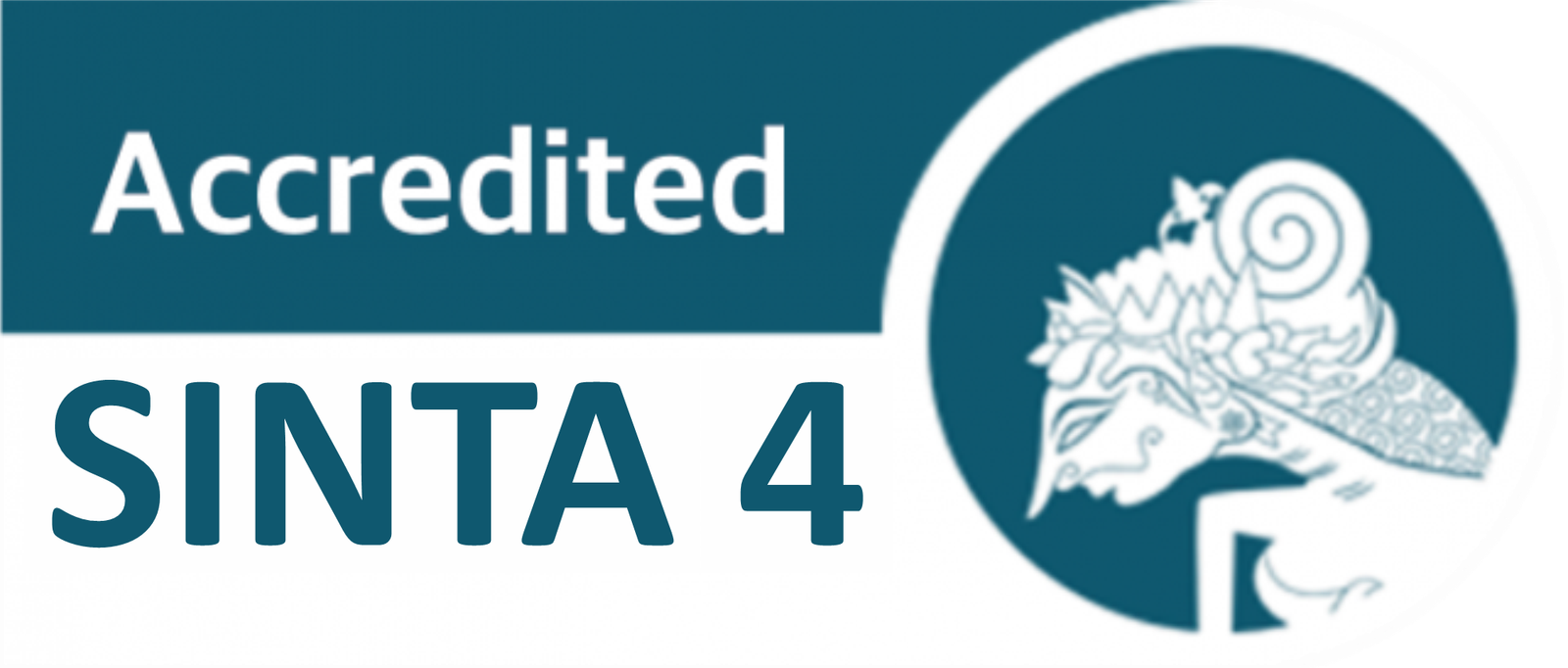The Impact of Short Video Content in Instagram Reels in Learning English
DOI:
https://doi.org/10.30605/jsgp.6.3.2023.6305Keywords:
Short Video Content, Instagram Reels, Learning EnglishAbstract
This study investigates the impact of Instagram Reels on English language learning among students of the English Department at Universitas Kristen Indonesia Toraja (UKI Toraja). Recognizing the growing role of digital media in education, the research aimed to explore how students perceive and utilize short video content as a learning tool. A qualitative research design was employed, with participants selected through purposive and snowball sampling to ensure that those interviewed had direct experience engaging with Instagram Reels for learning purposes. Data were collected through semi-structured interviews, which provided detailed insights into students’ experiences, preferences, and reflections on the use of Reels in supporting their English learning. The findings revealed that students frequently interacted with Reels that introduced new vocabulary, demonstrated correct pronunciation, and provided tips for everyday conversation. They emphasized that the short and visually appealing format of Reels made learning more enjoyable and easier to access compared to traditional learning resources. Many participants also noted that the use of humor, subtitles, and real-life contexts in the videos helped them better understand and retain language structures. In addition, students expressed that Reels played a role in boosting their confidence to practice speaking, as the content often provided authentic examples from native or fluent speakers. Despite these positive outcomes, students acknowledged that Instagram Reels should not replace formal instruction. They considered Reels a supplementary tool that supports, rather than substitutes, structured learning activities such as classroom discussions, lectures, and guided practice. The integration of Reels into a broader learning strategy was seen as most effective for enhancing both motivation and skill development. Based on these findings, the study recommends that educators consider integrating social media platforms like Instagram into language learning programs. Such integration has the potential to increase student engagement, foster independent learning, and improve overall learning outcomes.
Downloads
References
Aidinlou, N. A., & Moradinejad, A. (2016). Short-Term and Long-Term Retention of Vocabulary through Authentic Subtitled Videos. Advances in Language and Literary Studies, 7(5), 14–22. https://doi.org/10.7575/aiac.alls.v.7n.5p.14
Al-Qallaf, C. L., & Al-Mutairi, A. S. R. (2016). Digital literacy and digital content supports learningThe impact of blogs on teaching English as a foreign language. The Electronic Library, 34(3), 522–547. https://doi.org/10.1108/EL-05-2015-0076
Aslan, E. (2023). Bite-sized language teaching in the digital wild: Relational pedagogy and micro-celebrity English teachers on Instagram. System, 121. https://doi.org/10.1016/J.SYSTEM.2023.103238
Aslan, E., & Sirojitdinovna, M. B. (2023). Language learning made short and sweet? Exploring student perceptions of microcelebrity teacher reels on Instagram. Linguistics and Education, 88, 101430. https://doi.org/10.1016/J.LINGED.2023.101430
Barut Tugtekin, E., & Dursun, O. O. (2022). Effect of animated and interactive video variations on learners’ motivation in distance Education. Education and Information Technologies, 27(3), 3247–3276. https://doi.org/10.1007/S10639-021-10735-5/METRICS
Braun, V., & Clarke, V. (2006). Using thematic analysis in psychology. Qualitative Research in Psychology, 3(2), 77–101.
Carpenter, J. P., Morrison, S. A., Craft, M., & Lee, M. (2020). How and why are educators using Instagram? Teaching and Teacher Education, 96. https://doi.org/10.1016/J.TATE.2020.103149
Carraro, K., & Trinder, R. (2021). Technology in formal and informal learning environments: Student perspectives. Global Journal of Foreign Language Teaching, 11(1), 39–50. https://doi.org/10.18844/GJFLT.V11I1.5219
Chao, C. chi. (2022). Being a YouTuber that language learners recognize: A study on constructing language teacher identities in social media community of practice. System, 109. https://doi.org/10.1016/J.SYSTEM.2022.102860
Coman, C., Mesesan-Schmitz, L., Tiru, L. G., Grosseck, G., & Bularca, M. C. (2021). Dear student, what should I write on my wall? A case study on academic uses of Facebook and Instagram during the pandemic. PLOS ONE, 16(9), e0257729. https://doi.org/10.1371/JOURNAL.PONE.0257729
Creswell, J. W. (2021). A Concise Introduction to Mixed Methods Research. In SAGE publications (2nd ed.). SagePublication.
Fauzi, A. (2023). From scrolling to speaking: Students’ experiences in using TikTok duet for English practice. Celtic : A Journal of Culture, English Language Teaching, Literature and Linguistics, 12(1), 480–498. https://doi.org/10.22219/CELTIC.V12I1.40680
Fazel, H., & Sayaf, A. (2023). Social media integration in marketing education: A way forward to improve engagement and learning outcomes. Computers in Human Behavior Reports, 17, 100595. https://doi.org/10.1016/J.CHBR.2023.100595
Ganjoo, R., Schwartz, L., Barzani, Y., & Firmani, M. (2021). Exploring Instagram to Promote Student Engagement in an Online Didactic Environment. Journal of Microbiology & Biology Education, 22(1).
Gill, A. (2023). From Isolation to Collaboration: The Power of Critical Friends Groups in Leadership Development.
Gottbrath, J. (2023). Affective teacher tok: A sociomaterial analysis of teachers’ digital literacy practices on social media. Electronic Theses and Dissertations.
Huang, X., & Li, J. (2023). Factors affecting consumer attention : via viewing reels.
Kaye, D. B. V., Chen, X., & Zeng, J. (2021). The co-evolution of two Chinese mobile short video apps: Parallel platformization of Douyin and TikTok. Mobile Media and Communication, 9(2), 229–253. https://doi.org/10.1177/2050157920952120
Lim, W. M. (2023). What Is Qualitative Research? An Overview and Guidelines. Australasian Marketing Journal, 33(2), 199–229.
Loeng, S. (2020). Self-Directed Learning: A Core Concept in Adult Education. Education Research International, 2020(1), 3816132. https://doi.org/10.1155/2020/3816132
Lukmana, C. I., & Priyatmojo, A. S. (2023). Students’ Perception of the Use of Instagram as Social Media to Enhance Their Speaking Skills. Bookchapter English Language Teaching, Literature, and Translation, 1(1), 122–149. https://doi.org/10.15294/ELTLT.V1I1.343
Mahapatra, N., & Sahoo, J. (2021). Highly cited articles in social sciences: an analytical study. Library Hi Tech News, 38(10), 5–9. https://doi.org/10.1108/LHTN-01-2021-0001
Malik, N. I., Ramzan, M. M., Malik, Z., Tariq, I., & Shafiq, S. (2023). The Rise of Reels: Analyzing the Communicative Power of Short-Form Videos on Social Media. Qlantic Journal of Social Sciences , 6(2), 138–145. https://doi.org/10.55737/QJSS.VI-II.25350
Montero Perez, M. (2022). Second or foreign language learning through watching audio-visual input and the role of on-screen text. Language Teaching, 55(2), 163–192. https://doi.org/10.1017/S0261444821000501
Naser, K. M., Alamassi, S., Shanaa, Z. A., Abualrish, M., Alghazo, E. M., Zaitoun, E. A., Abulibdeh, E., & Shater, A. (2023). Enhancing Postgraduate Learning Achievement: A Microlearning Approach with Reels and Shorts. Proceedings - 2023 10th International Conference on Social Networks Analysis, Management and Security, SNAMS 2023. https://doi.org/10.1109/SNAMS60348.2023.10375449
Olejniczak, A. (2022). The usage of Instagram app on the example of young consumers of the Generation Z. Serbian Journal of Management, 17(2), 351–360. https://doi.org/10.5937/SJM17-40460
Omar, B., & Dequan, W. (2020). Watch, share or create: The influence of personality traits and user motivation on TikTok mobile video usage. International Journal of Interactive Mobile Technologies, 14(4), 121–137. https://doi.org/10.3991/IJIM.V14I04.12429
Rathnasekara, K., Yatigammana, K., & Suraweera, N. (2023). Innovative pedagogical framework in K12 education: enhancing productivity and engagement of digital natives within resource-constrained environments. Quality Education for All, 2(1), 413–438. https://doi.org/10.1108/QEA-11-2023-0129
Ristianti, Y., Santhi, D. D. Y., & Juhana, J. (2023). The Use Of Reels Instagram To Facilitate The Secondary School Students’ Speaking Skills. Dinasti International Journal of Education Management And Social Science, 6(4), 2852–2871. https://doi.org/10.38035/DIJEMSS.V6I4.4214
Robinson, O. C. (2023). Probing in qualitative research interviews: Theory and practice. Qualitative Research in Psychology, 20(3), 382–397. https://doi.org/10.1080/14780887.2023.2238625
Saad, B., Fatma, A., & Seffah, Z. (2023). Role of Social Digital Platforms in Facilitating the Creation of Digital Educational Content -Analytical Study-. Ex Professo, 10(1), 56–74.
Saleem, A., Kausar, H., & Deeba, F. (2021). Social Constructivism: A New Paradigm in Teaching and Learning Environment. Perennial Journal Of History, 2(2), 403–421. https://doi.org/10.52700/PJH.V2I2.86
Sari, F. M., & Wahyudin, A. Y. (2019). Undergraduate Students’ Perceptions Toward Blended Learning through Instagram in English for Business Class. International Journal of Language Education, 3(1), 64–73. https://doi.org/10.26858/ijole.v1i1.7064
Shadiev, R., & Yang, M. (2020). Review of Studies on Technology-Enhanced Language Learning and Teaching. Sustainability 2020, Vol. 12, Page 524, 12(2), 524. https://doi.org/10.3390/SU12020524
Sunita, J. K. (2023). A study of the usage and perception of instagram as a learning tool. I-Manager’s Journal of Educational Technology, 21(3), 30. https://doi.org/10.26634/JET.21.3.21279
Supervisor, I., & Poudel, D. (2023). From Reels to Real Change : Sustainability Messaging through Short-Form Video by Influencers. http://www.theseus.fi/handle/10024/887629
Urbaite, G. (2023). The Role of Technology in Modern Language Education. EuroGlobal Journal of Linguistics and Language Education, 1(1), 3–10. https://doi.org/10.69760/W00R1V81
Downloads
Published
How to Cite
Issue
Section
License
Copyright (c) 2023 Serti Tandi Datu, Markus Deli Girik Allo, Shilfani Shilfani, Muh. Putra Pratama

This work is licensed under a Creative Commons Attribution-ShareAlike 4.0 International License.
In submitting the manuscript to the journal, the authors certify that:
- They are authorized by their co-authors to enter into these arrangements.
- The work described has not been formally published before, except in the form of an abstract or as part of a published lecture, review, thesis, or overlay journal.
- That it is not under consideration for publication elsewhere,
- That its publication has been approved by all the author(s) and by the responsible authorities – tacitly or explicitly – of the institutes where the work has been carried out.
- They secure the right to reproduce any material that has already been published or copyrighted elsewhere.
- They agree to the following license and copyright agreement.
License and Copyright Agreement
Authors who publish with JSGP agree to the following terms:
- Authors retain copyright and grant the journal right of first publication with the work simultaneously licensed under Creative Commons Attribution License (CC BY-SA 4.0) that allows others to share the work with an acknowledgement of the work's authorship and initial publication in this journal.
- Authors are able to enter into separate, additional contractual arrangements for the non-exclusive distribution of the journal's published version of the work (e.g., post it to an institutional repository or publish it in a book), with an acknowledgement of its initial publication in this journal.
- Authors are permitted and encouraged to post their work online (e.g., in institutional repositories or on their website) prior to and during the submission process, as it can lead to productive exchanges, as well as earlier and greater citation of published work.













